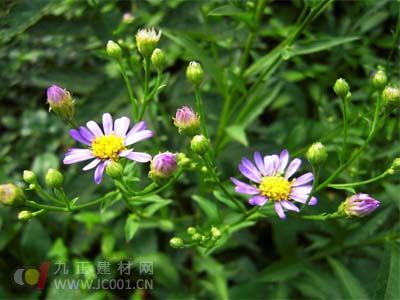Aster cultivation method:
Breeding methods : commonly used sowing, cutting propagation.
Sowing : It can be sown in spring in March and germinated 12-15 days after sowing. Cuttings: Cut the top tender stems in the spring, and roots 15-20 days after insertion.
Aster is propagated with rhizomes, planted in spring and autumn, spring planted in early April, and autumn planted in late October. The actual production is mostly carried out in autumn, and the seedlings are prevented from freezing in the ground in winter. It can only be planted in spring. When harvesting, choose thick and dense rhizomes. The color is white and tender with purple-red, no insect marks, and the rhizome close to the ground is used for planting. The stems are planted, because such rhizomes are easy to twitch and flower after planting, affecting the yield and quality of the roots.

Planting in autumn planting with the plant, if the spring planting needs to be stored, the rhizome selected will be cut into small pieces of 6.7 ~ 10 cm long before planting, each with 2 to 3 bud eyes, with roots The stalks are fresh and the buds are obviously germinated. The shallow gullies of 6.7 to 8.3 cm are opened at a distance of 33 cm. The cut plants are placed in the ditch at a distance of 16.5 cm. Two to three stalks are placed on each row. After gently suppressing and watering, 150-225 kg of rhizomes are needed per hectare, and the seedlings are released about 2 weeks after planting.
Field management : There are many weeds in the early spring and early summer, and weeding should be done frequently to loosen the soil to avoid root damage. In summer, when the leaves are grown up, the grass can only be pulled out after ridges, and it is not suitable for squatting. During the growth period, the soil should be kept moist, especially in the arid regions of the north. Pay attention to irrigation. Whether it is autumn or spring planting, it should be properly watered in the seedling stage, but the ground should not be too moist, so as not to affect the root rooting.
June is a period of flourishing leaves, which requires a lot of water. It is also the dry season in the north. It should be noted that more irrigation and loose soil will keep moisture. During the rainy season in July and August, the purple party will not be able to accumulate water, but should strengthen drainage. After the rainy season in the month, it is necessary to properly water the roots during the development period. In general, the irrigation and drainage of the purpura should vary according to the growth period and the region. After the flowering of the purpura, it will affect the growth of the roots. If there is any convulsion, the alfalfa should be cut immediately. Do not pull with your hands, so as not to drive the roots to affect growth.
The LED Linear Trunking System have an integrated cable-free system called trunking, which is pre-wired in the factory. The trunking can be seamlessly spliced, and the installation of the trunking does not require additional wiring and purchase additional materials. Therefore, it can greatly shorten the construction period, reduce installation costs, labor costs, and auxiliary materials costs.
The 7 Wire trunking linear lights can achieve the following functions:
(1)L,N,E (Basic Lighting)+ Sensor/Dimming + Built-in Battery Emergency
(2)L1,L2,L3,N,E (Basic Lighting)+ Sensor/Dimming
(3)L1,L2,N,E (Basic Lighting)+ Sensor/Dimming+ Built-in Battery Emergency

Commercial Lighting Products,Led Linear Trunking Light,Dimmable Led Light Fixture,Led Shop Light Fixtures,Emergency Lighting System
SHENZHEN LITEHOME OPTOELECTRONIC TECHNOLOGY CO., LTD. , https://www.litehomelight.com